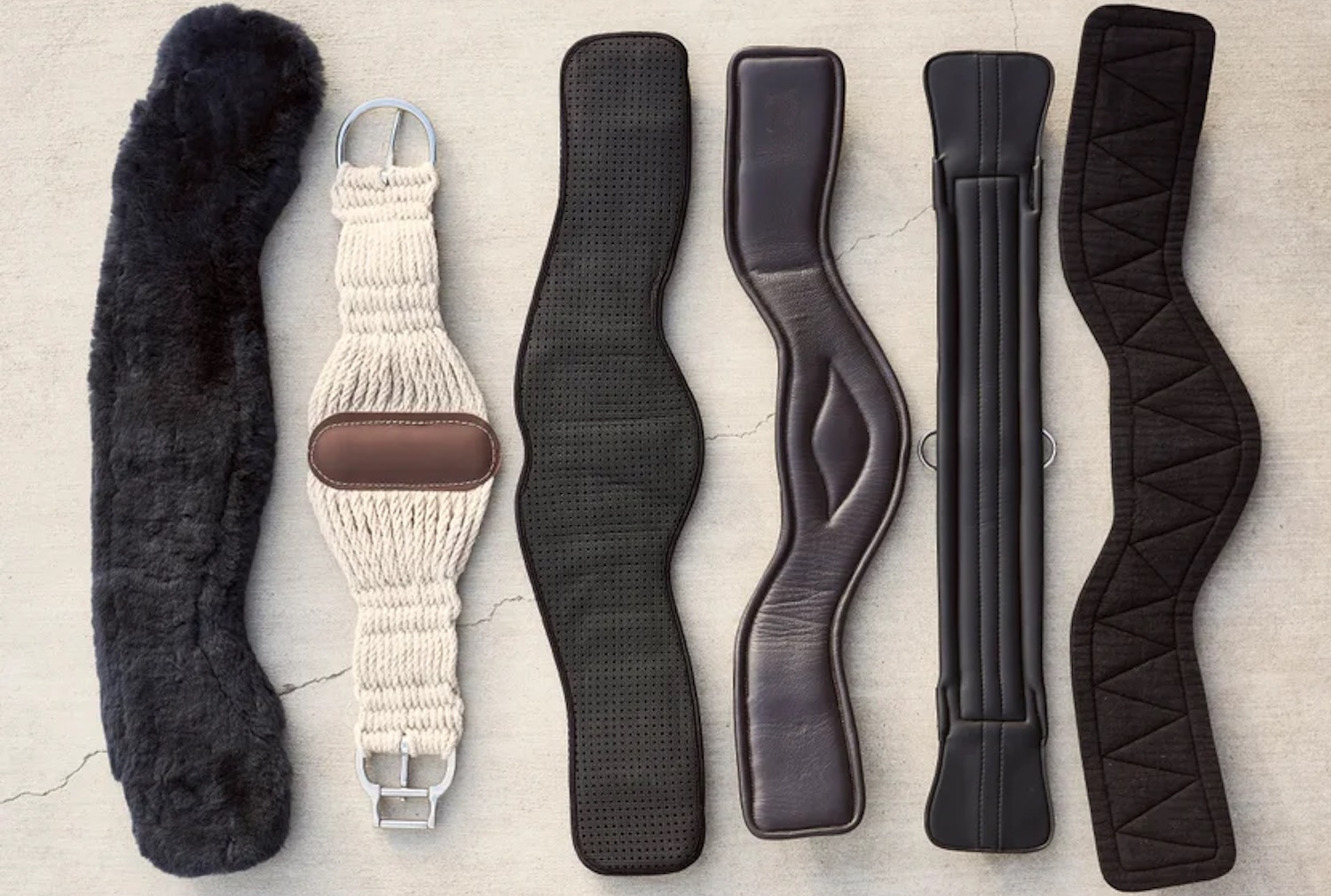The girth, an important piece of tack that ensures that both horse and rider have a comfortable and safe riding experience by keeping the saddle in place. However purchasing the right girth can quickly become overwhelming with the different brands, materials, shapes, and sizes available. In this article we will break down the five types of materials you are likely to encounter when selecting a girth.
Traditional Leather Girths
The traditional leather girth is by far one of the most versatile girths available for English riders. They are typically passed for comfort, and are available in straight or slight contoured cuts. They typically feature two buckles on each side, and often sport elastic on one or both sides to assist when tightening. They require regular cleaning to ensure they remain in good condition and smooth to limit chafing or irritation. If they are well-cared for they will outlast most other girths available, and they provide a clean and classic turnout suitable for everyday riding and the show ring.
Neoprene Girths
Neoprene girths are another form of synthetic girth that are extremely soft and flexible. They come in various cuts and sizes. The primary advantage to this material is its low maintenance. Many neoprene girths can be machine washed, they dry incredibly quickly, and can be wiped down easily after a ride. The downside to neoprene is that it retains heat and has a higher chance of causing skin irritation. To try and limit these downfalls many brands have worked to create waffle or pinhole textures to promote better airflow when in use.
Synthetic Fleece Girths
Synthetic Fleece girths are typically synthetic made from a nylon webbing backed with a thick layer of artificial or real fleece. These girths are great at wicking away moisture and ensuring that the skin stays dry and cool. They are perfect for horses with skin sensitivity or who are prone to develop sores from the friction of the girth. Like the leather girths they often sport elastic to assist with tightening. These girths are typically machine washable, but are known for holding on to loose hairs, and are more prone to staining making them less suitable for formal occasions. They can be harder to fit and may allow for more movement of the saddle, so it is important to perform girth checks throughout your ride.
String and Cord Girths
String and Cord Girths often provide the best airflow of all the girthing options. They move relatively well with the horse’s body and come in both natural and synthetic options. They are typically inexpensive and machine washable. The downside to this girth is it provides no padding and can cause severe rubs and bruising if improperly fitted.
Honourable Mention – Sheepskin Covers
Sheepskin is a popular padding material that is used as a liner or as a girth cover to help regulate temperature, wick away moisture, and provide additional padding for sensitive skin. Sheepskin liners and girth covers do have to be checked and straightened to ensure that they do not twist or cause pressure points which can lead to sores and irritation. They do require extra care and typically have to be hand washed to ensure that they do not deteriorate or shrink when washed.

